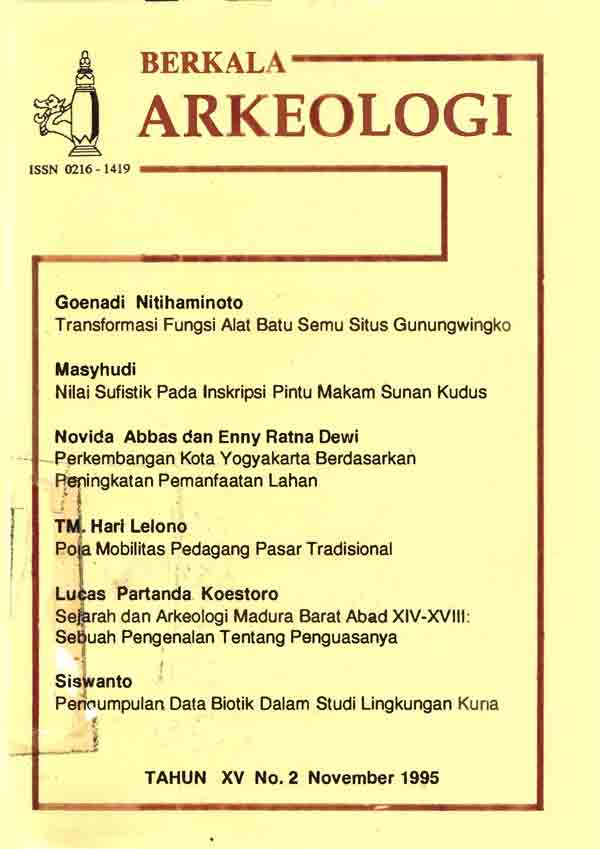PENGUMPULAN DATA BIOTIK DALAM STUDI LINGKUNGAN KUNA
Main Article Content
Abstract
The natural history of the environment can be studied through environmental resources (physical and biotic) along with archaeological resources. Thus, the role of archaeological studies as a support in environmental studies is clear so that this can be the other way around, for the sake of archaeological studies it is necessary to support it by carrying out past environmental studies.
Article Details

This work is licensed under a Creative Commons Attribution-NonCommercial-ShareAlike 4.0 International License.
References
Dimbleby, Geoffrey. 1978. Plant and Archaeology. Paladin Granada Publishing, London, Toronto, Sidney, New York.
Evans, John G. 1978,Environmental Archaeology. Paul Elek, London
Joukowsky, M. 1980. A Complete Manual of Field Archaeology, Tools and Tecniques of Field Work for Archaeologists. Prentice-Hall, Inc., Englewood Cliffs, New Jersey.
Martopo, Sugeng. 1994. Peranan Arkeologi Dalam Studi Lingkungan. Artefak - No.14/Agustus 1994. Fakultas Sastra UGM Yogyakarta.
Polunin, Nicholas, 1990. Geografl Tumbuhan (Terjemahan oleh: Gembong Tjitrosupomo, Editor: Wibisono Soerodikoesoemo). Gadjah Mada University Press. Yogyakarta.
Renfrew, Colin & Bahn, Paul.1991. Archaeology - Theories, Methods and Practice. Thames and Hudson Ltd, USA.
Schiffer, MB. (Ed.). 1983. Arhaeological Method and Theory. Academic Press, New York, London.
Shackley,M. 1981. Environmental Archaeology. George Allen & Unwin London, Boston, Sydney.
Watson. Patty Jo, Le Blanc, dan CL Redman, 1971. Explanation in Archaeology, An Explicitly Scentific Approach. Columbia University Press, New York.

